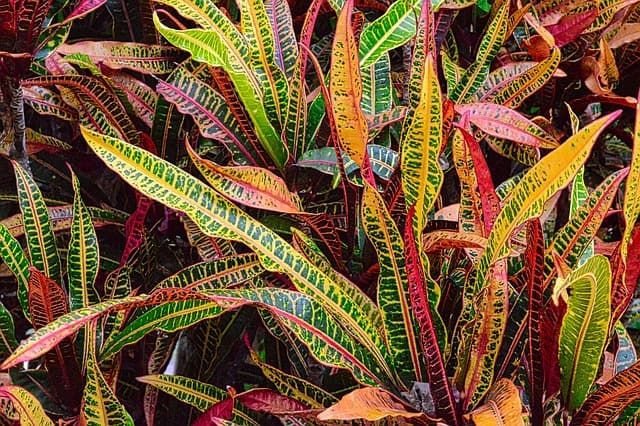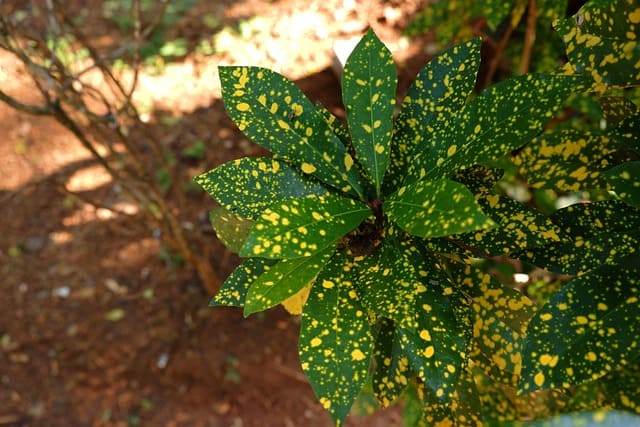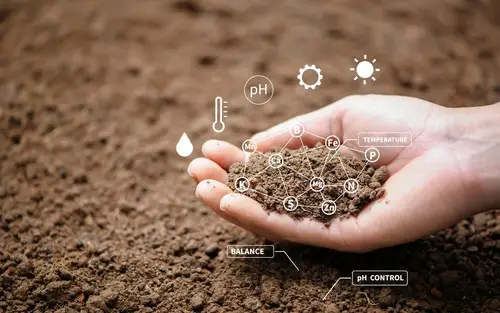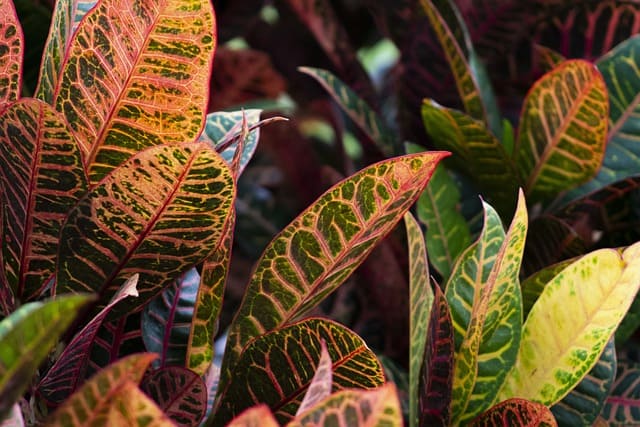Croton plants are a popular choice among gardeners due to their vibrant and colorful foliage. However, sometimes they can start to droop and wilt, which can be concerning for plant owners. In this article, we will explore the reasons behind croton plant drooping leaves and what steps you can take to fix this issue.
Understanding the croton plant is key to addressing drooping leaves. Croton plants are native to tropical regions and require warm temperatures and high humidity levels to thrive.
They are also sensitive to changes in their environment, such as changes in light and water. Croton plants can grow up to six feet tall and are known for their broad, glossy leaves that come in a variety of colors and patterns.
Identifying drooping leaves is the first step in addressing the issue. Drooping leaves on a croton plant can be a sign of a variety of problems, including overwatering, underwatering, lack of humidity, or exposure to cold temperatures.
By understanding the cause of drooping leaves, plant owners can take the necessary steps to revive their croton plants and prevent the issue from happening again.
Key Takeaways
- Croton plants require warm temperatures and high humidity levels to thrive.
- Drooping leaves on a croton plant can be a sign of overwatering, underwatering, lack of humidity, or exposure to cold temperatures.
- Identifying the cause of drooping leaves is key to addressing the issue and preventing it from happening again.
Check out these other posts in this category:
Understanding Croton Plant

Croton plant is a popular tropical plant native to Southeast Asia. It is a member of the Euphorbia family and is known for its colorful leaves and variegated foliage. The plant is widely cultivated for its ornamental value and is a favorite among gardeners and houseplant enthusiasts.
Croton plants are known for their vibrant leaves that come in a range of colors, including red, orange, yellow, green, and purple. The leaves are typically thick and leathery, and they can be either smooth or crinkled. The plant produces new growth throughout the year, which adds to its overall appeal.
Croton plants can grow up to 10 feet tall, but they are usually kept smaller as houseplants. They prefer bright, indirect light and warm, humid conditions. The plant is sensitive to cold temperatures and should be kept away from drafts and air conditioning vents.
When it comes to watering, croton plants like moist soil but can be sensitive to overwatering. It’s important to let the soil dry out slightly between waterings to prevent root rot. Fertilizer should be applied regularly during the growing season to promote healthy growth and vibrant foliage.
Identifying Drooping Leaves
Croton plants are known for their colorful foliage and striking appearance. However, if you notice your croton plant’s leaves drooping or falling off, it’s a sign that something is wrong. Identifying drooping leaves is crucial to determine what’s causing the issue and how to fix it.
Symptoms of Drooping Leaves
Drooping leaves are a common issue with croton plants, and it can be caused by various factors. The most common symptoms of drooping leaves include:
- Leaves that are wilted or limp
- Leaves that are curling or turning brown
- Leaves that are falling off the plant prematurely
- A general decline in the plant’s overall health
Causes of Drooping Leaves
There are several causes of drooping leaves in croton plants. Some of the most common causes include:
- Overwatering: If the soil is too wet, the roots will rot, and the plant will start to wilt and droop.
- Underwatering: If the soil is too dry, the plant will start to wilt and droop as well.
- Lack of sunlight: Croton plants need bright, indirect sunlight to thrive. If they don’t get enough light, the leaves will start to droop and fall off.
- Temperature stress: Croton plants are sensitive to temperature changes, and extreme heat or cold can cause the leaves to droop and fall off.
- Nutrient deficiency: Croton plants need a balanced diet of nutrients to grow healthy. A lack of nutrients can cause the leaves to droop and fall off..
Croton Plant Drooping Leaves – 8 Common Problems

Croton plants are known for their vibrant foliage and striking colors, but drooping leaves can be a sign of underlying issues. Understanding the causes of drooping leaves is crucial to ensure the health and longevity of your croton plant.
1. Watering Issues
Overwatering and underwatering are common causes of drooping leaves in croton plants. Watering routine and schedule are important factors to consider when caring for your croton.
If the soil is too moist or soggy, it can lead to root rot and drooping leaves. On the other hand, if the soil is too dry, it can cause the leaves to wilt and droop. It is important to maintain a consistent watering schedule and ensure that the soil is moist but well-draining.
2. Light and Temperature Conditions
Croton plants require bright, indirect light to thrive. Insufficient light can cause the leaves to droop and turn yellow. On the other hand, direct sunlight can cause the leaves to scorch and droop.
Temperature stress, extreme cold or hot temperatures, and cold drafts can also cause the leaves to droop. It is important to place the croton in a sunny location with consistent temperatures and avoid sudden movements.
3. Pest and Disease Infestation
Pest infestation, such as mealybugs, spider mites, and scale insects, can cause the leaves to droop and turn yellow. Diseases such as root rot can also cause the leaves to droop. It is important to inspect the plant regularly for signs of pest infestation and disease and take appropriate measures to control and prevent them.
4. Stress and Environmental Changes
Stress and environmental changes can also cause croton leaves to droop. Transplant shock, sudden movement, and changes in humidity can cause the leaves to droop.
It is important to acclimate the plant to its new environment and maintain consistent humidity levels. Misting, using a humidifier, or placing the pot on a pebble tray can help maintain humidity levels.
5. Age and Growth Factors
As croton plants age, they may experience slow growth and loss of turgor pressure, causing the leaves to droop. Fertilizer application mistakes and nutrient deficiencies can also contribute to drooping leaves.
Repotting or transplanting can also cause stress and lead to drooping leaves. It is important to provide proper care and fertilize the plant regularly to prevent nutrient deficiencies.
6. Soil and Drainage Problems

Soil and drainage problems can also cause the leaves of croton plants to droop. Poor soil quality, lack of drainage holes, and standing water can cause root rot and drooping leaves. It is recommended to use well-draining potting soil and ensure that the pot has proper drainage holes. Adding perlite to the potting soil can also improve drainage.
7. Other Potential Causes
Other potential causes of drooping leaves in croton plants include poisonous milky sap, bright leaves, and red leaves. If you suspect that your croton plant is suffering from any of these issues, it is important to take appropriate measures to prevent further damage.
8. Prevention and Treatment of Drooping Leaves
Preventing and treating drooping leaves in croton plants involves maintaining proper care and addressing any underlying issues.
This includes maintaining a consistent watering schedule, providing adequate light and temperature conditions, using well-draining potting soil, preventing pest and disease infestation, acclimating the plant to environmental changes, and providing proper care and fertilization.
Frequently Asked Questions
How can I revive a droopy croton plant?
If your croton plant is drooping, it may be due to underwatering or overwatering. The first step is to assess the soil moisture level. If the soil is dry, water the plant thoroughly and let the excess water drain out.
If the soil is waterlogged, allow it to dry out before watering again. You can also mist the leaves to increase humidity around the plant. If the plant is still droopy after a few days, check for signs of pests or diseases.
Why is my croton plant wilting?
A croton plant may wilt due to several reasons, including underwatering, overwatering, low humidity, or pests and diseases. Check the soil moisture level and adjust watering accordingly.
Increase humidity by misting the leaves or placing a tray of water near the plant. Check for pests such as spider mites, mealybugs, or scale insects, and treat them promptly.
What are the signs of an overwatered croton plant?
An overwatered croton plant may have yellowing leaves, soft stems, and a foul smell. The soil may be waterlogged, and there may be mold or fungus growing on the soil surface. If the plant is in a container, check for drainage holes and make sure the excess water can drain out.
What causes croton plants to drop leaves?
Croton plants may drop leaves due to several reasons, including environmental stress, pests and diseases, underwatering, overwatering, or sudden changes in temperature or light. Check the soil moisture level, humidity, and light conditions, and adjust as needed. Check for pests and diseases and treat them promptly.
Can croton leaves grow back after falling off?
Yes, croton leaves can grow back after falling off if the plant is healthy and receives proper care. However, it may take some time for the new leaves to grow. Make sure the plant is watered and fertilized properly, and provide it with the right light and humidity conditions.
What is the lifespan of a croton plant?
The lifespan of a croton plant can vary depending on the variety, growing conditions, and care. In general, croton plants can live for several years and may reach up to six feet in height. With proper care, a croton plant can thrive and add color and texture to any indoor space.

Hey, I’m Lisa and I’ve been an avid gardener for over 30 years. I love writing, talking and living in the garden! Feel free to connect with me on my socials below

